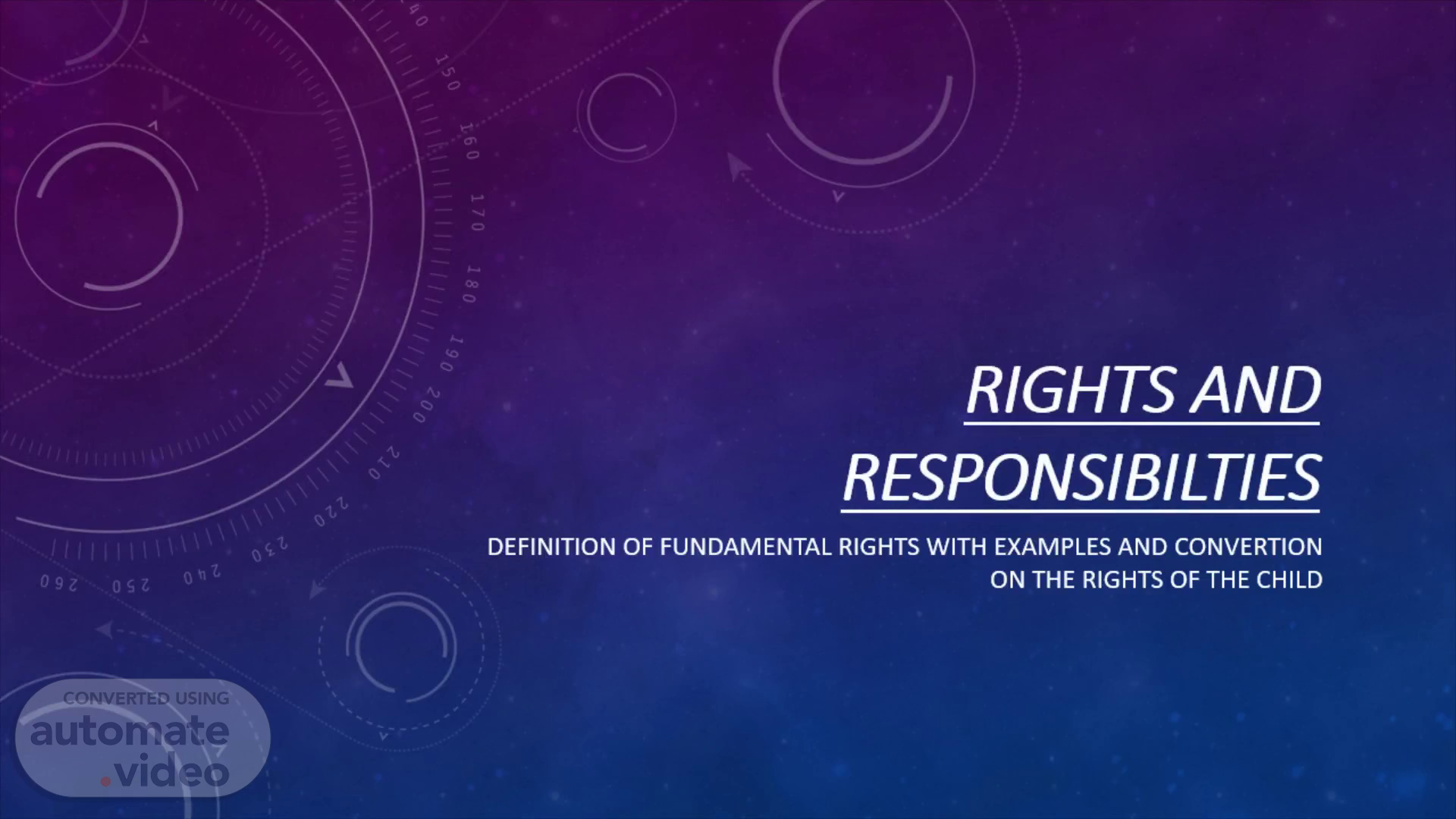
Rights and responsibilties
Scene 1 (0s)
Rights and responsibilties. Definition of fundamental rights with examples and convertion on the rights of the child.
Scene 2 (9s)
Fundamental rights. Funamental rights are essential human rights that a offerd to every citizen irrespective of caste, race, creed, place of birth, religon or gender. Examples: Right to educate, Freedom of speech, Freedom of association, Privacy.
Scene 3 (24s)
Convention on the rights of the child. The UN Convention on the Rights of the child is a comprehensive, intenertionallly binding agreement of the rights of children, which was adopted by the United Nations General Assembly in 1989. Itis the most widley ratified human rights treaty in history: all countrys have ratified it with the exeption of the United States of America and Somalia. THE 4 CORE PRINCIPLES OF THE CONVENTION Non discrimination Devotion to the best interests of the child The right to life, survival and development Respect for the veiws of the child.
Scene 4 (51s)
RIGHTS AND RESPONSIBILITIES. A right is a choice to make your own opinion and entitlement to things such as education, religion and freedom of speech. Responsibilities are duties or something an individual should do such as following the law and rules..
Scene 5 (1m 11s)
Human rights. Human rights are the basic rights and freedoms that belong to every person in the world, from birth until death. They apply regardless of where you are from, what you believe or how you choose to live your life. Examples; Freedom from torture and other cruel and inhuman treatment. Freedom of religion. Education and an adequate standard of living..
Scene 6 (1m 35s)
NATIONAL SYMBOLS. A national symbol is a symbol that of any entity considering and manifesting it self to the world as a national community. Examples: National Flag National Anthem National Emblem National Tree National Flower National Currency.
Scene 7 (1m 49s)
National symbols intend to unite people by creating visual, verbal, or iconic respresentations of the national people, values, goals, or history. These symbols are often rallied around as part of celebrations of patriotism or aspiring nationalism (such as independence, autonomy or separation movements) and are designed to be inclusive and representative of all the people of the national community..
Scene 8 (2m 20s)
Citizenship is the position or status of being a citizen of a particular country. 5 Good Qualities of a citizen include: - Volunteer to be active in your community. - Be honest and trustworthy. - Follow rules and laws. - Respect the rights of others. - Be compassionate..
Scene 9 (2m 39s)
Factors that deny access to fundamental rights. Historical factors. Cultural and religious factors. Technological factors. Economic Factors.. Social Factors..
Scene 10 (2m 51s)
Positive ways one can promote and work for the rights of the people.
Scene 11 (3m 13s)
Thank you!.